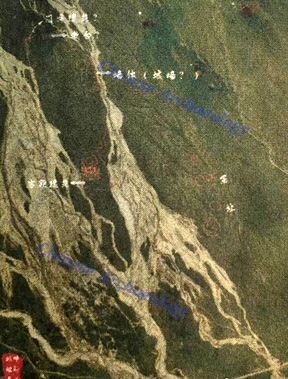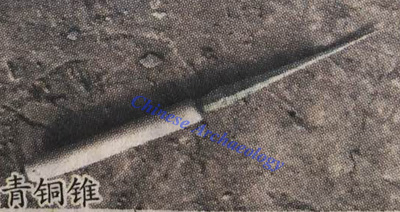Information
A large-scaled early bronze age remains found in Wenquan County, Xinjiang
Summary: In June 2016, excavations of Husita site in Wenquan County, Xinjiang were conducted by Institute of Archaeology, Chinese Academy of Social Science.
A large-scaled early bronze age remains found in Wenquan County, Xinjiang
From:Chinese Archaeology Writer: Date:2017-02-14
In June 2016, excavations of Husita site in Wenquan County, Xinjiang were conducted by Institute of Archaeology, Chinese Academy of Social Science. Husita site consists of three parts from north to south. In the north, there is a housing remains with an irregularly Chinese character “田” shaped plane on the top of Heishantou Hill. In the south, there is a rectangular building and an about 100-meter-long stone wall enclosing the building on the top of the hill. In the west, there is a cemetery on the top of hill, which contains the only two large stone-slab tombs from Bronze Age discovered so far in Wenquan County. Alluvial fan of Alatao Mount surrounded by building remains on the southern and northern top of hills is the most important part of Husita site. It has stone-structure housing remains in all sorts of shapes. The excavations in 2016 were mainly carried out in Heishantou Hill and alluvial fan respectively.

The aerial photo which showed the palace buildings in Husita site
The excavation of alluvial fan area focused on a building complex. It consisted of a rectangular main building, a front chamber, a west side chamber, a courtyard and an enclosure, covering more than 5000 square meters. In the southwest corner of the main building, there was a sacrificial pit, uncovering different kinds of remains, such as human skeletons, pottery, bronze artifacts and so on. Among them, bronze short sword (knife) and bronze awl with a horn handle were well preserved and were the most completed bronze weapons with horn handles in Eurasian Steppe region.

The aerial photo which showed the wall and large-scale buildings
Around the north of large-scaled building, there was an upside U-shaped wall consisting of west, north and south walls. It’s more than 450m long. The walls, the large scaled building complex and other housing remains consisted of the more than 100,000 square meters core area of Husita site. It was predicted to be an early Bronze Age city site and was the first discovery of city site in this period in Xinjiang region.
Significant achievements were also made by the excavations of Heishantou Hill. The structures and building techniques of two discovered housing remains were exactly the same with those of the large building complex in alluvial fan area. Uncovered pottery also indicated that the date was consistent with that of the large building complex. There were two complete horse skulls being found on the floor of the building. They are the earliest horse remains in China so far, which could provide materials for research on the origins of domestic horse in China.

The bronze dagger

The bronze awl
Housing remains on Heishantou Hill echoed buildings on the top of Xiaohusita Hill in the south. And city site where the large-scaled building complex was a centre and housing groups in the periphery consisted of a comprehensive system, which probably was a political center of this vast area. They together provided important materials for research on social developmental phrases and social organization structures of Bronze Age archaeological cultures in this area as well as Eurasian steppe region. (Translator: Ma Huanhuan)

The aerial photo which showed the palace buildings in Husita site
The excavation of alluvial fan area focused on a building complex. It consisted of a rectangular main building, a front chamber, a west side chamber, a courtyard and an enclosure, covering more than 5000 square meters. In the southwest corner of the main building, there was a sacrificial pit, uncovering different kinds of remains, such as human skeletons, pottery, bronze artifacts and so on. Among them, bronze short sword (knife) and bronze awl with a horn handle were well preserved and were the most completed bronze weapons with horn handles in Eurasian Steppe region.

The aerial photo which showed the wall and large-scale buildings
Around the north of large-scaled building, there was an upside U-shaped wall consisting of west, north and south walls. It’s more than 450m long. The walls, the large scaled building complex and other housing remains consisted of the more than 100,000 square meters core area of Husita site. It was predicted to be an early Bronze Age city site and was the first discovery of city site in this period in Xinjiang region.

The bronze dagger

The bronze awl
Housing remains on Heishantou Hill echoed buildings on the top of Xiaohusita Hill in the south. And city site where the large-scaled building complex was a centre and housing groups in the periphery consisted of a comprehensive system, which probably was a political center of this vast area. They together provided important materials for research on social developmental phrases and social organization structures of Bronze Age archaeological cultures in this area as well as Eurasian steppe region. (Translator: Ma Huanhuan)
Category: English
News
Information
Key words:
